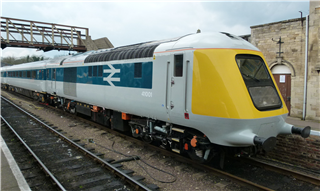The British Rail Class 41 were two powercars, numbered 41001 and 41002, built in 1972 by British Rail Engineering Limited's Crewe Works to operate with the prototype High Speed Train (HST) with Mark 3 carriages. They initially conducted tests on the East Coast Main Line with the set based at Neville Hill TMD.
Having accumulated more than 100,000 miles, including setting a diesel train speed record of 143 mph between Northallerton and Thirsk in June 1973, they moved to the Great Western Main Line in 1974 entering revenue service on Great Western services between London Paddington and Bristol Temple Meads / Weston-super-Mare.
After the Class 252 re-classification they were renumbered into the carriage numbering range as 43000 and 43001. After being replaced by production Class 43 HST powercars in the early 1980s, both were allocated to the Railway Technical Centre and used in various high speed trials associated with the Advanced Passenger Train and InterCity 225 projects. In December 1990, 41002 was scrapped by CF Booth in Rotherham, while 41001 was restored cosmetically and donated to the National Railway Museum.
In 2011, the National Railway Museum agreed a lease with the 125 Group that resulted in 41001 moving from York to Neville Hill TMD in March 2012 to be restored to operational condition. As part of this move, it was re-registered on TOPS as Class 43/9 locomotive 43000.
